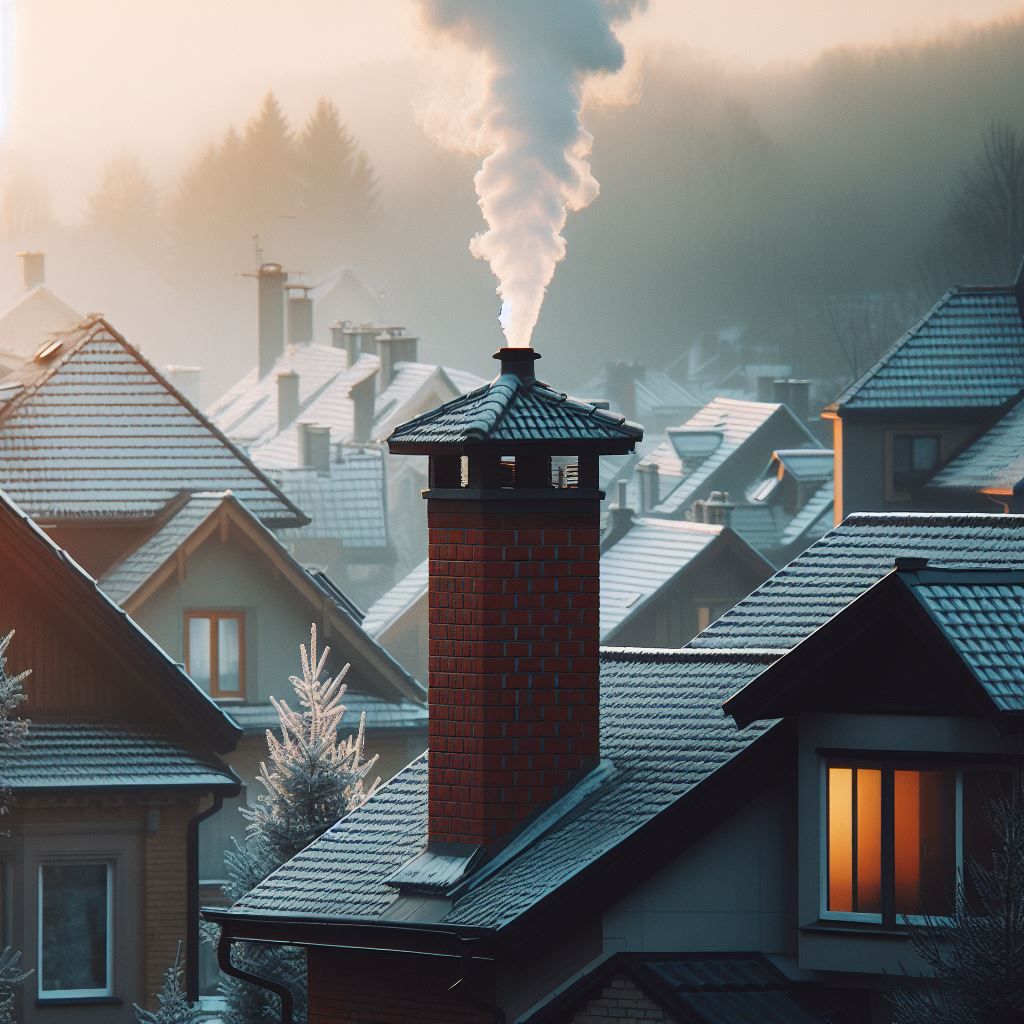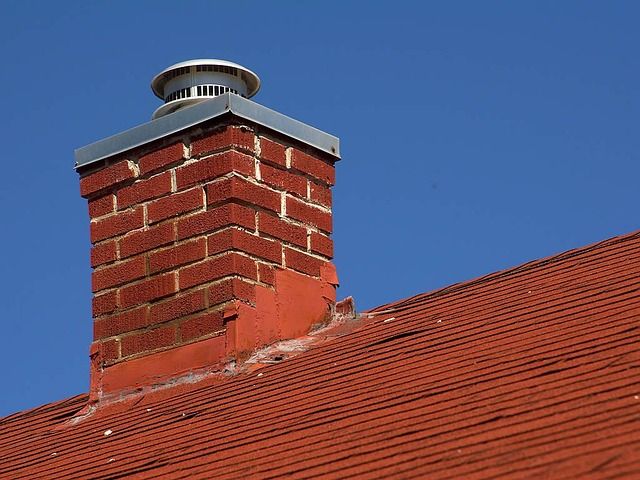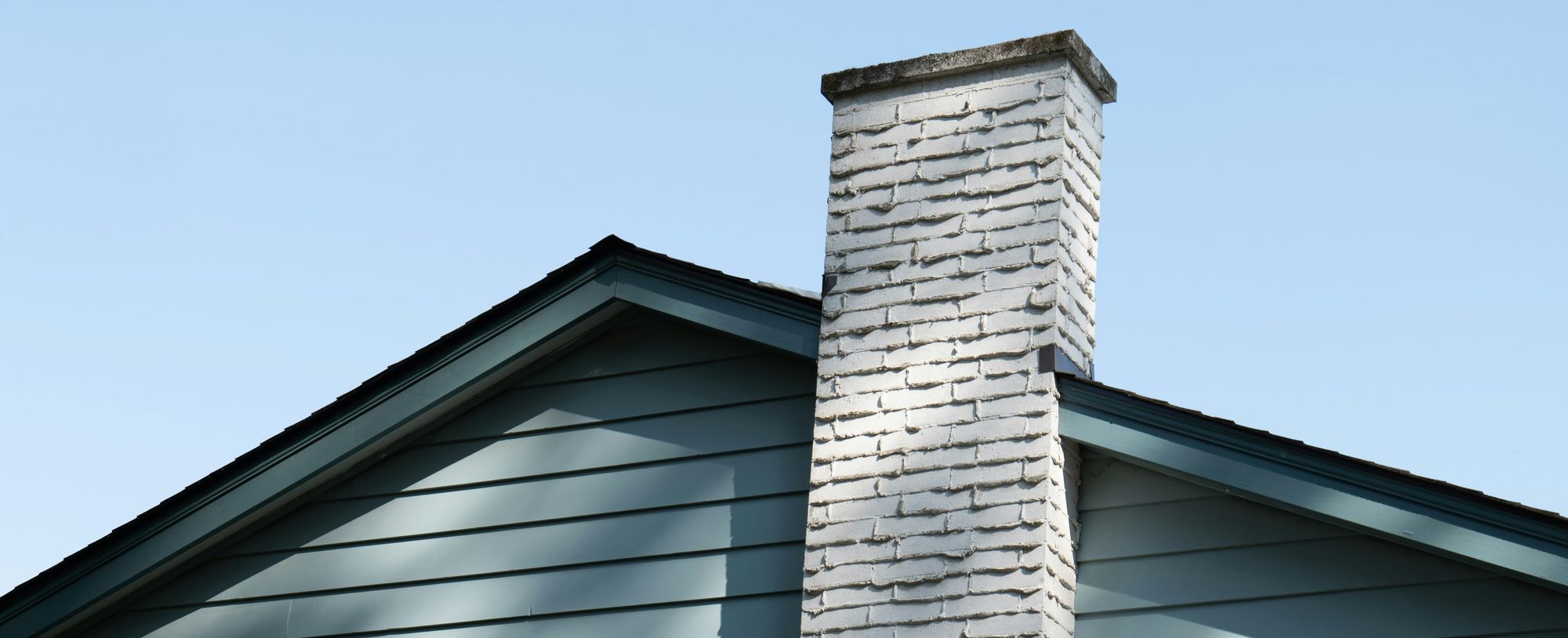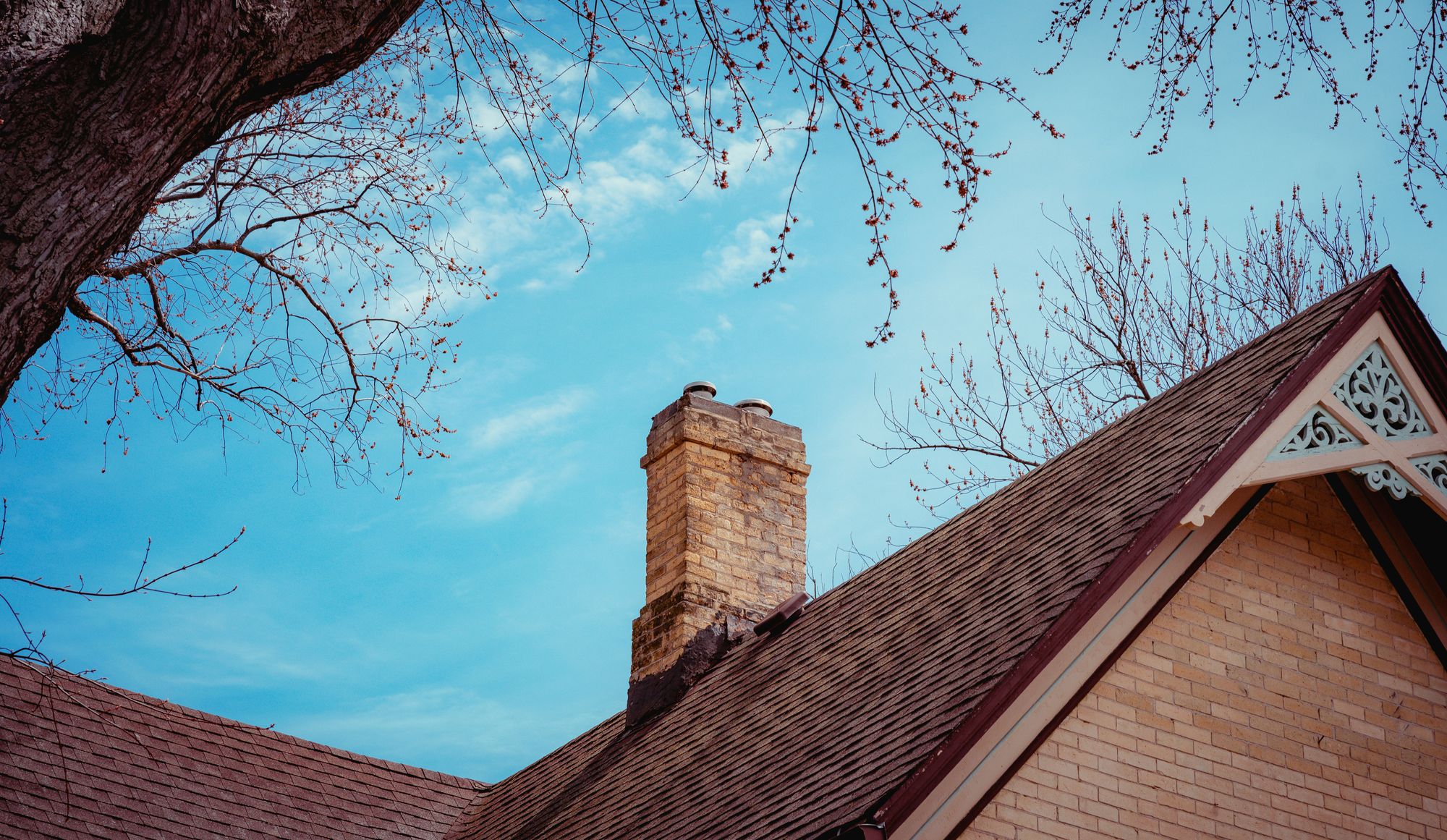Navigating Your Chimney Upgrade: Chimney Types, Renovation Strategies, Replacement Process and Effective Financing
Embarking on a chimney upgrade or replacement project is a significant decision

Table of Contents
- Introduction
- Chimney Types
- Chimney Upgrade and Renovation Tips
- Efficient Chimney Replacement Process
- Home Improvement Financing
- Conclusion
- Call to Action
Key Takeaways
- Chimney Types - There are various types of chimneys, each with their own unique features and benefits. Understanding these will help you select the right chimney for your home.
- Renovation Strategies - Renovating your chimney can improve its efficiency and aesthetic appeal. Use practical tips and strategies like regular maintenance, using quality materials and hiring professional services to ensure a successful renovation.
- Replacement Process - Replacing your chimney is a complex process that involves careful planning and execution. It's important to understand each step, from the initial assessment to the final installation.
- Home Improvement Financing - Financing your chimney upgrade or replacement doesn't have to be a daunting task. There are various home improvement financing options available that can help you cover the costs effectively.
- Informed Decision Making - Making informed decisions about your chimney upgrade or replacement can save you time, money, and potential future issues. Always consider factors like the type of chimney, costs, renovation or replacement process and financing options.
- Expert Advice - When planning a chimney upgrade or replacement, it's beneficial to seek advice from experts who can provide personalized guidance based on your specific needs and circumstances.
Introduction: Making Your Hearth the Heart of Your Home
When it comes to home improvements, attention often gravitates towards the more visible aspects – a fresh coat of paint, new flooring, or updating kitchen appliances. However, one crucial element that should never be overlooked is the hearth of your home, your chimney.
Chimneys play more than just a decorative role; they are essential for safety, health, and efficiency in homes that use fireplaces or other fuel-burning appliances. Therefore, understanding the various types of chimneys and their unique features is paramount when considering a renovation or upgrade.
Whether you have a traditional masonry chimney, a prefabricated metal one, or a direct vent chimney, each comes with its own set of advantages, maintenance requirements, and potential challenges. Choosing the right chimney for your home can impact everything from your heating efficiency to the aesthetic appeal of your living space.
Renovating your chimney isn't just about giving it a facelift. It's also about improving the functionality, safety, and longevity of your heating system. The process might seem daunting, but with the right guidance, you can smoothly navigate it, transforming your chimney into a real asset.
Sometimes, upgrading your chimney may involve a complete replacement, especially if the existing structure has extensive damage or is outdated. The replacement process, while complex, can be efficiently managed with a proper understanding of the steps involved.
However, home improvements, including chimney upgrades or replacements, often come with substantial costs. This is where strategic financing comes into play. An appropriate financial plan can make your chimney upgrade project more feasible and less stressful, allowing you to enjoy the results without the burden of financial strain.
In this comprehensive guide, we delve into these critical aspects, providing you with a roadmap to navigate your chimney upgrade. As the saying goes, "knowledge is power," and with this guide, you'll be empowered to make informed decisions about your home's most warming feature.
Chimney Types
Understanding Different Chimney Types
When it comes to chimneys, one size does not fit all. There are a variety of chimney types to choose from, each with its own unique characteristics, construction materials, and suitability for different homes and heating systems.
1. Masonry Chimneys:

These are traditional chimneys made from bricks, stone, or concrete blocks. They are highly durable, with a lifespan of up to 100 years with proper maintenance, but they require professional installation due to their weight and complexity. The average construction cost ranges from $100 to $200 per linear foot, not including the fireplace. Regular inspection and maintenance are essential to prevent deterioration and ensure safety.
Pros and Cons Table
|
Pros |
Cons |
|
Durable and
long-lasting, up to 100 years |
High initial
installation cost |
|
Adds aesthetic and
traditional appeal to the home |
Requires regular
maintenance to prevent deterioration |
|
Can be
custom-designed |
Heavy, requiring a
strong foundation |
2. Metal Chimneys:

Also known as prefabricated or factory-built chimneys, these are made from stainless steel or aluminum. They're lighter, easier to install, and less expensive than masonry chimneys, costing around $100 to $800 per unit. However, their lifespan is shorter, typically around 15 to 20 years.
Pros and Cons Table
|
Pros |
Cons |
|
Lightweight and
easier to install than masonry |
Shorter lifespan,
typically 15-20 years |
|
Less expensive
upfront cost |
May not blend as
well aesthetically with some home styles |
|
Suitable for a
variety of heating appliances |
Requires inspection
and possible replacement more frequently |
3. Wood Stove Chimneys:
These chimneys, specifically designed for wood-burning stoves, can be made from stainless steel or masonry. They are relatively durable and cost-effective, with an average cost of $1,000 to $3,500, including installation.
4. Direct-Vent Chimneys:
Used primarily for gas fireplaces, these chimneys are made from metal and vent directly outside, eliminating the need for a full chimney system. They are cost-effective, low-maintenance, and have a lifespan of about 15 to 25 years. The average cost, including installation, ranges from $600 to $5,000.

Pros and Cons Table
|
Pros |
Cons |
|
Highly efficient,
reducing energy costs |
Limited to gas
appliances only |
|
Does not require a
traditional chimney structure |
Installation can be
restricted by home layout and venting requirements |
|
Safe, as it prevents
indoor air pollution |
Higher initial cost
than B-vent systems |
5. B-Vent Chimneys: These chimneys, also for gas appliances, require vertical installation and venting. They're typically made from galvanized steel, cost less than direct-vent chimneys, and have a similar lifespan. The average cost is around $350 to $500.
6. Chimney Liners: While not a type of chimney, a liner is crucial for safety and efficiency. It can be made from clay, metal, or ceramic, each with its own cost, durability, and maintenance needs. Clay liners are the most affordable but least durable, while stainless steel liners are more expensive but offer greater longevity.
7. Electric Fireplace Chimneys: These chimneys are part of electric fireplaces, which don't produce real flames or smoke, so they don't require venting. They are the least expensive option, with prices starting as low as $100, and they require very little maintenance.
Understanding these different types of chimneys and the materials used in their construction, can help you make an informed decision when it comes to choosing the right chimney for your home. Whether it's the durability of masonry, the convenience of prefabrication, or the efficiency of a direct vent, your choice will significantly impact the functionality and aesthetic of your home's hearth.
Choosing the Right Chimney for Your Home
Deciding on the right chimney for your home involves more than simply choosing a design that complements your décor. It requires a careful consideration of several factors to ensure that your choice meets your home's heating needs, aligns with your budget, and ultimately, ensures the safety and health of your household.
Firstly, consider the type of fuel your heating system uses. For instance, if you have a wood-burning fireplace, a masonry or prefabricated chimney could be a suitable choice. However, if you use a gas fireplace or stove, a direct vent chimney may be the most efficient and safe option.
The cost is another key factor. While masonry chimneys offer aesthetic appeal and durability, they are typically more expensive than prefabricated or direct vent chimneys. It's essential to balance the upfront costs against long-term maintenance expenses and the lifespan of the chimney.
Your home's architecture also plays a role. Some homes might not support the weight of a heavy masonry chimney, making a lightweight prefabricated chimney a better choice. It's also crucial to consider how the chimney's design will blend with your home's overall aesthetic.
Lastly, don't forget about local building codes and regulations. These can impact everything from the type of chimney you can install to the required maintenance and safety measures.
In conclusion, choosing the right chimney for your home is a crucial decision that should be made after careful consideration of your home's heating needs, budget, architecture, and local regulations. With these factors in mind, you can ensure that your chimney not only adds warmth and charm to your home, but also operates efficiently and safely.
Chimney Upgrade and Renovation Tips
Essential Renovation Tips for Chimneys
When it comes to renovating your chimney, a careful approach is key. Here are some practical tips to ensure your chimney's renovation enhances its functionality and aesthetic appeal, while also ensuring its safety and longevity.
1. Hire a Professional: Chimney renovation, whether it involves simple repairs or a complete overhaul, is not a DIY project. Hiring a certified chimney professional guarantees that the work is correctly and safely done, adhering to local building codes and standards.
2. Regular Inspections: Before starting any renovations, have your chimney inspected to identify any underlying issues. This step helps prevent future problems and ensures that your renovation efforts aren't wasted on a chimney that may need more extensive repairs or replacement.
3. Choose Quality Materials: Whether you're replacing a chimney cap or rebuilding the entire structure, always opt for high-quality materials. They might be more costly upfront, but their durability can save you from frequent repairs down the line.
4. Consider Energy Efficiency: If you're renovating your chimney, it's the perfect opportunity to improve its energy efficiency. For instance, consider installing a chimney liner to improve heat retention and reduce creosote build-up.
5. Maintain the Aesthetic: While functionality is crucial, don't ignore aesthetics. Your renovated chimney should blend well with your home's architecture and décor. Use this opportunity to add character and charm to your home.
6. Plan for Safe Disposal: Renovations can generate a lot of debris. Plan for its safe and environmentally friendly disposal.
Remember, renovating your chimney is an investment in your home. By following these tips, you can ensure a successful renovation that improves your home's safety, efficiency, and appeal.

Step-by-Step Guides
Replacing a Chimney Liner
1. Assess the Current Liner: Inspect your existing chimney liner for damage or deterioration. This will help determine whether a replacement is necessary.
2. Choose the Right Material: Decide on the material for your new liner (stainless steel, aluminum, or clay) based on your chimney type and fuel source.
3. Remove the Old Liner: Carefully dismantle and remove the old liner, taking precautions to avoid damage to the chimney structure.
4. Install the New Liner: Lower the new liner into the chimney, ensuring it fits securely. Seal any connections to prevent leaks.
5. Test for Functionality: Perform a smoke test to check for proper ventilation and ensure there are no leaks in the new liner.
Repointing Brickwork
1. Inspect the Mortar: Examine the existing mortar for signs of wear or damage. Significant deterioration will require repointing.
2. Remove Old Mortar: Carefully chisel out the damaged mortar to a depth of about ½ inch, avoiding damage to the bricks.
3. Prepare the Mortar Mix: Mix a new batch of mortar that matches the existing one in color and composition.
4. Apply the Mortar: Use a pointing trowel to fill in the gaps with the new mortar, pressing firmly to ensure a solid fill.
5. Smooth and Shape: Shape the mortar joints to match the original style, then smooth the surface for a uniform finish.
6. Cure the Mortar: Allow the mortar to cure slowly, keeping it moist for a few days to prevent cracking.
Maintenance Schedule Template
Offering a downloadable Chimney Maintenance Schedule Template, homeowners can keep track of regular inspections, cleanings, and maintenance tasks essential for different types of chimneys. This proactive approach helps in identifying potential issues early, ensuring the safety, efficiency, and longevity of the chimney.
The template includes sections for:
· Annual Inspections: To be performed by a certified chimney professional, noting any recommendations or required repairs.
· Cleaning Records: Tracking the frequency of chimney cleanings, especially important for wood-burning fireplace chimneys prone to creosote buildup.
· Maintenance Tasks: A checklist of homeowner-performed tasks, such as checking for obstructions, assessing for visible damage, and monitoring for signs of water leakage.
By following the step-by-step guides for common chimney renovation projects and utilizing the maintenance schedule template, homeowners can ensure their chimney remains in optimal condition, enhancing the overall safety and enjoyment of their home.

Chimney Transformation Strategies
Transforming your chimney can significantly boost the aesthetic appeal and functionality of your home. Here are some innovative strategies to inspire your chimney makeover.
1. Modernize with a Metal Facade: A sleek and modern look can be achieved by replacing an old brick chimney with a stainless steel or copper facade. For example, a homeowner in San Francisco did this to achieve a contemporary look, adding a unique architectural element to their home.
2. Add a Fireplace Insert: A fireplace insert can transform your chimney into an efficient heat source. A couple in Boston installed an EPA-certified wood-burning insert, reducing heating costs while preserving their home's rustic charm.
3. Paint or Whitewash: A simple yet effective transformation strategy is painting or whitewashing your chimney. A family in Seattle revitalized their dark, dated brick chimney with a fresh coat of white paint, instantly brightening their living space.
4. Install a Chimney Cap: Not only does a chimney cap protect your chimney from weather and wildlife, but it also adds a decorative touch. A homeowner in Chicago installed a custom-designed copper chimney cap that added a striking visual element to their roofline.
5. Convert to a Gas Fireplace: For those seeking convenience and cleanliness, converting a wood-burning chimney to a gas fireplace is an excellent option. A retired couple in Denver made this switch, enjoying the comfort of a fire at the flip of a switch.
Remember, the key to a successful chimney transformation is planning, using quality materials, and hiring professionals where necessary. With these strategies in mind, you can create a charming and functional centerpiece for your home.
Efficient Chimney Replacement Process
Understanding the Chimney Replacement Process
Replacing a chimney is a significant endeavor that involves careful planning and execution. Here is a step-by-step guide to help you understand the process.
1. Inspection: The first step is a thorough inspection of the existing chimney by a certified professional. They assess the condition of the chimney to identify any potential issues and verify if a replacement is necessary.
2. Quotation: After the inspection, the contractor provides an estimate detailing the cost of the replacement. This includes the cost of materials, labor, disposal of the old chimney, and any necessary permits.
3. Removal: Once the project is greenlit, the old chimney is carefully dismantled. This process needs to be done carefully to prevent any damage to the surrounding structures of your home.
4. Installation: The new chimney is installed according to the specifications outlined in the contract. This involves building the chimney, installing the flue liner, and adding a chimney cap.
5. Testing: After the installation, the contractor tests the new chimney to ensure it's functioning correctly. This involves checking for proper ventilation, smoke clearance, and heat efficiency.
6. Cleanup: The final step involves cleaning up the site, removing all debris, and ensuring the work area is left as clean as it was before the work started.
Remember, chimney replacement isn't a DIY project. It requires the skills and knowledge of a professional to ensure the job is done correctly and safely. By understanding the process, you can make informed decisions and ensure your chimney replacement goes smoothly.

Checklist for Replacement
Initial Assessment:
· Inspect the current chimney for structural and functional integrity.
· Determine the necessity of replacement based on damage, efficiency, or aesthetic reasons.
Planning and Design:
· Decide on the type of chimney suitable for your home's heating system and architectural style.
· Consult with a certified chimney professional for design options and compliance with local codes.
Hiring Professionals:
· Obtain quotes from multiple licensed contractors with experience in chimney installation.
· Check references, reviews, and credentials before making a selection.
Permit and Regulation Compliance:
· Apply for necessary permits as required by local building codes.
· Ensure the design meets all safety and environmental regulations.
Preparation and Demolition:
· Prepare the site by securing the area and protecting property from potential damage.
· Carefully dismantle and remove the old chimney, adhering to safety protocols.
Installation:
· Follow the planned design and specifications for the new chimney installation.
· Install a new liner, cap, and other components as necessary.
Testing and Inspection:
· Perform a smoke test to ensure proper ventilation and no leaks.
· Have the installation inspected by a local official or certified inspector to ensure compliance.
Cleanup and Final Review:
· Clear the site of debris and construction materials.
· Review the completed project with the contractor to ensure satisfaction.
Common Pitfalls to Avoid
· Ignoring Local Building Codes: Ensure your project complies with all local regulations to avoid fines or required modifications.
· Skipping Professional Inspection: A professional assessment can identify hidden issues, preventing future problems.
· Choosing the Cheapest Option: Opt for quality and reliability over the lowest bid to ensure longevity and safety.
· Neglecting Proper Ventilation: Ensure the new chimney provides adequate ventilation to prevent hazardous conditions.

Case Study: Efficient Chimney Replacement
The Johnson family, residing in a 1970s suburban home in Austin, Texas, encountered a common problem: their outdated brick chimney had deteriorated over time and needed replacement. The family sought a timely, cost-effective solution that would not only address the functionality but also enhance their home's aesthetic appeal.
The Johnsons contacted a reputable local chimney specialist who promptly conducted a thorough inspection. It was clear the old chimney was beyond repair, and a full replacement was recommended. They received a detailed quote, priced at $4,500, inclusive of labor, materials, and waste disposal.
The Johnsons agreed to proceed, and the project was scheduled to start within two weeks. The removal process took a day, during which the old chimney was carefully dismantled and disposed of, ensuring minimal disruption to their home.
The new chimney was built over the next three days. The Johnsons opted for a modern, stainless steel chimney, accompanied by a top-sealing damper for improved energy efficiency. The entire installation process was seamless, and the new chimney blended perfectly with their home's design.
Post-installation, the new chimney was tested to ensure its proper functioning, followed by a thorough cleanup. The entire replacement process was completed within a week, right on schedule.
The Johnsons were delighted with the efficient turnaround, the affordability, and the improved aesthetics and functionality of their new chimney. This case illustrates that with proper planning and a professional approach, chimney replacement can be a smooth, efficient process.
Home Improvement Financing
Financial Planning for Your Chimney Upgrade
Planning a chimney upgrade or replacement can be a significant investment, and understanding the potential costs is critical for effective financial planning.
1. Assess Your Needs: Determine what needs to be done - a simple repair, an aesthetic upgrade, or a complete replacement. Costs can range from a few hundred to several thousand dollars, depending on the scope of work.
2. Get Multiple Estimates: Contact several reputable chimney professionals for estimates. Ensure they include all potential costs, such as labor, materials, and waste disposal.
3. Plan for Unexpected Costs: Chimney projects can uncover unforeseen issues like structural damage or mold. Set aside an additional 10-20% of your budget to cover unexpected costs.
4. Consider Financing Options: If the cost is high, consider financing options. Some contractors offer payment plans, or you could use a home improvement loan.
5. Prioritize Value Over Cost: While it's essential to stay within budget, the cheapest option isn't always the best. Prioritize quality materials and skilled labor to ensure your chimney will last and function effectively.
By carefully planning and budgeting, you can ensure your chimney upgrade or replacement is financially feasible and adds value to your home.
Financing Comparison Chart
|
Financing Option |
Interest Rate |
Term Length |
Eligibility Requirements |
|
Personal Loan |
5% - 36% |
1 - 7 years |
Good credit score,
proof of income |
|
Home Equity Loan |
3% - 7% |
5 - 30 years |
Equity in home, good
credit score |
|
HELOC |
3% - 6% (variable) |
10-year draw,
20-year repayment |
Equity in home, good
credit score |
|
Contractor Financing |
Varies |
Varies |
Based on
contractor's terms |
Real-life Financing Scenarios
Scenario 1: Personal Loan for Chimney Repair
· Situation: The Smith family needed urgent repairs for their chimney but lacked immediate funds.
· Decision: They opted for a personal loan due to its fast funding and lack of collateral requirement.
· Outcome: They secured a loan with a 7% interest rate, allowing them to complete the repairs quickly without draining their savings.
Scenario 2: Home Equity Loan for Complete Replacement
· Situation: The Johnsons wanted to replace their old chimney with a modern, more efficient model.
· Decision: They chose a home equity loan to take advantage of lower interest rates and tax-deductible interest.
· Outcome: They borrowed against their home's equity at a 4% interest rate, spreading the cost over 15 years.
Scenario 3: Contractor Financing for Chimney Upgrade
· Situation: The Garcia family decided to upgrade their chimney but preferred not to affect their existing credit lines.
· Decision: They utilized the contractor’s financing offer, which provided a manageable plan without upfront costs.
· Outcome: The Garcias entered into a financing agreement directly with the contractor, facilitating the upgrade with minimal financial strain.
Understanding and Using Home Improvement Financing
Home improvement financing is a tool homeowners can use to fund large-scale projects, such as a chimney upgrade or replacement. This financial solution comes in various forms - personal loans, home equity loans, lines of credit, or contractor-offered financing.
Personal home improvement loans are unsecured, meaning they don't require your home as collateral. They have fixed interest rates, and the repayment period usually ranges from 1 to 7 years. These loans can be an excellent choice for smaller, less expensive renovations like a chimney repair or upgrade.
Home equity loans or lines of credit, on the other hand, use your home's equity as collateral. They typically offer lower interest rates compared to personal loans, making them suitable for more costly projects like a full chimney replacement.
Contractor-offered financing is another option, where the contractor themselves offers a payment plan. This can be a convenient option, but make sure to understand the terms and interest rates.
In all cases, it's essential to assess your financial situation, consider the repayment terms, and shop around for the best rates. By doing so, you can make your chimney upgrade project more affordable, spreading the cost over a manageable period.
Conclusion
Upgrading or replacing a chimney can be a significant home improvement project, both in terms of cost and impact on the home's functionality and aesthetics. Throughout this article, we've explored a successful case study, financial planning strategies, and the effective use of home improvement financing to make such projects more achievable and affordable.
From the Johnson family's experience, we've seen that with proper planning, professional collaboration, and a keen eye for detail, even substantial projects like a chimney replacement can be completed efficiently, on time and within budget. This example underscores the importance of choosing a reliable chimney specialist, understanding the project's scope, and aligning it with the aesthetics of your home.
When it comes to financial planning, understanding the costs involved is crucial. This includes the costs of labor, materials, and potential extra expenses. It's advisable to obtain estimates from multiple contractors, set aside a buffer for unexpected costs, and consider the value over mere cost. While budgeting is essential, prioritizing quality ensures the longevity and effectiveness of your chimney.
Home improvement financing, whether through personal loans, home equity loans, or contractor-offered financing, can be a valuable tool for homeowners. These options allow for spreading the cost over a manageable period, making even large-scale projects like chimney replacements financially feasible.
In conclusion, embarking on a chimney upgrade or replacement project is a significant decision. It not only pertains to improving your home's functionality and aesthetics but also requires thoughtful financial planning. By being informed and proactive, homeowners can successfully navigate this journey, resulting in a home improvement that adds value, comfort, and an enhanced living experience. So, whether you're considering a small upgrade or a complete chimney overhaul, remember to plan, budget, and explore your financing options to make an informed and beneficial decision.
Now that we've walked through the process, from planning to financing your chimney upgrade or replacement, you're better equipped to take the next step. However, every home and homeowner's situation is unique, and you might benefit from more personalized advice.
At SimpleDirect, we are committed to helping you make the most informed decisions about your home improvement projects. Our team of experts can provide tailored advice on your specific needs, whether it's for a minor chimney repair, a full-scale replacement, or understanding the best financing options available to you.
Remember, upgrading your chimney is not just about improving its function or aesthetic appeal. It's an investment in your home's value and your family's comfort and safety. We can help you ensure that this investment is worth every penny and is as affordable as possible.
Don't navigate this journey alone. Let SimpleDirect guide you towards the best possible outcome for your chimney upgrade project. Contact us today for a consultation and let's start planning your home's next big improvement together. We're here to help you turn your house into the dream home you've always envisioned.
